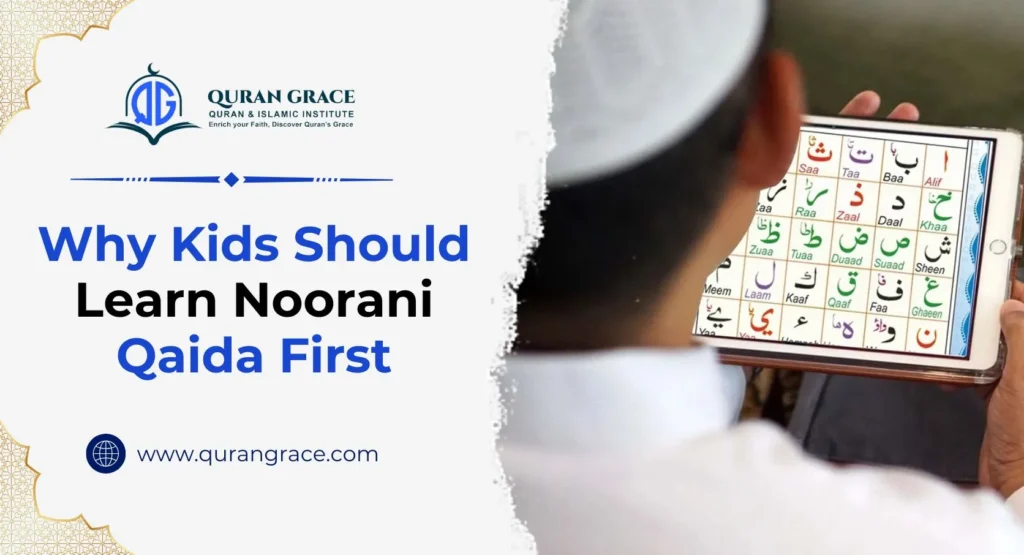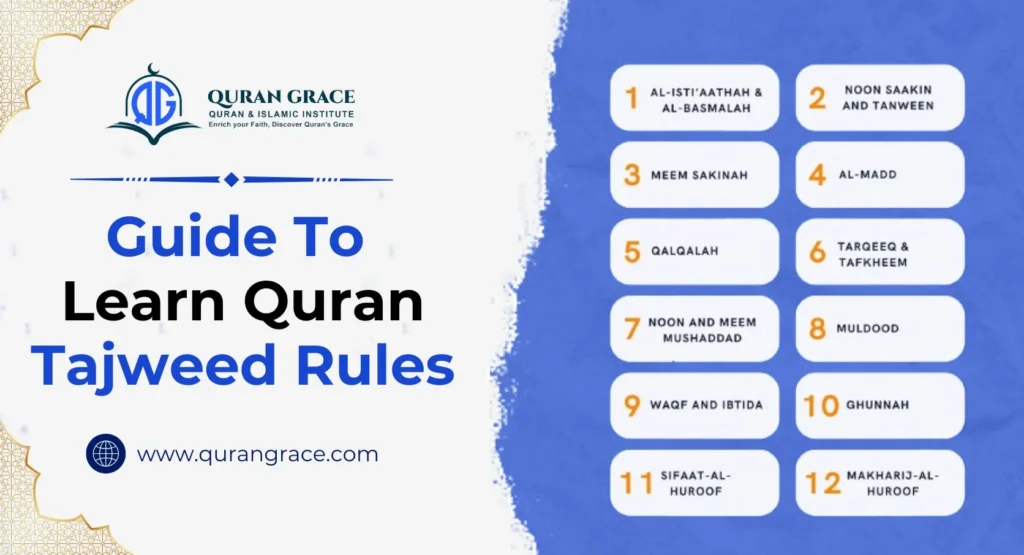Mastering the rules of Tajweed requires dedication and patience. Each rule holds its importance and is crucial for achieving excellence in pronunciation, particularly with the makharij (articulation points). With constant practice and revision, you can master all quran tajweed rules, which are mandatory to learn for accurate Quran recitation.
Table of Contents
ToggleWhat is Meem Saakin?
The letter Meem is one of the distinct characters in the Arabic alphabet, and the term “saakin” refers to a state of rest or inactivity, implying the absence of movement. When the letter Meem is devoid of any of the three short vowel signs—fatha (a), dammah (u), and kasra (i)—it assumes the status of “Meem saakin,” marked by a sign of jazm. It’s important to note that when Meem is accompanied by any of these short vowel markings, it cannot be classified as Meem saakin because of the properties of the sign it carries.
Meem saakin can occur in various contexts, appearing either in the middle of a word or at its end, and it is found in both nouns and verbs. There are different types of meem saakin. Consistent practice in recognizing and applying these rules with precision will greatly enhance your pronunciation and recitation skills.
If you see the following aspects with a letter meem, it will not be considered as meem saakin. These Ahkam meem sakinah are crucial to learn to avoid any confusion while learning the rules.
- If there is a vowel or harakah on meem like fatha, damma, or kasra, it will not be a meem saakin.
- If there is a shaddah (double stress) on meem, it will not be a meem saakin.
- If meem is combining 2 saakins (mutaharrik), it will not be a saakin.
Now, what Rasulullah SAW said about reciting the Quran is inspiring:
3 Rules of Meem Saakin With Examples
3 distinct rules for meem saakin are found in the Quran and mastering these 3 rules in online Tajweed classes ensures excellent execution of Quran recitation.
- Ikhfaa Shafawi
- Idgham Shafawi
- Izhar Shafawi
1- Ikhfaa Shafawi
In Arabic, the term “Ikhfaa“ translates to “to hide or disappear,” while “Shafawi” pertains to the “lips.” A specific phonetic rule applies when a word concludes with a meem sakinah (م) and is succeeded by the letter “baa” (ب). In such cases, the reciter is instructed to conceal the sound of the meem by producing a nasal sound known as “ghunna.” This phenomenon is similar to the Iqlab rule in Noon Sakinah, where the sound of noon is transformed into the sound of baa.
To illustrate this concept further, let us explore several examples that incorporate Ikhfaa Shafawi.
|
عَلَيْهِمْ بِمُصَيْطِرٍ |
|
أَنبَأَهُمْ بِأَسْمَائِهِمْ |
|
فَبَشِّرْهُمْ بِــعَذَابٍ |
You will pronounce the letter meem by blending it with the letter baa and holding the sound for 2 seconds in your nasal cavity to utter a ghunnah.
Note: Consider taking advantage of a free evaluation or consultation at the Quran Grace advanced tajweed course, where you can learn all the Tajweed rules under the guidance of skilled Egyptian tutors.
2- Idghaam Shafawi
Idgham, derived from Arabic, signifies the concept of “merging or consolidating into another.” Within the realm of tajweed, it specifically refers to the phonetic blending of one letter’s sound into another, effectively creating a sound that enhances the rhythm and flow of recitation.
One specific type of Idgham is known as Idgham Shafawi, which takes place when a meem sakinah (a silent ‘م’) is immediately followed by a meem mushaddad (a doubled ‘م’). This fusion transforms the two distinct sounds into a single pronounced sound, exhibiting the principle of Idgham Mithlain Sagheer. The term “Mithlain” translates to “the same as the other,” indicating that both letters share identical attributes in terms of Harakah (vowel markings), Makhraj (articulation points), and Sifah (qualities). The addition of “Sagheer” serves to highlight that while the first letter lacks a vowel, the second one is inherently vocalized.
In this process, the meem without vowel melds with the voiced meem, resulting in the production of a nasal sound known as “Gunnah.” This phenomenon not only creates a strong acoustic connection between the two Meems but also breathes life into the previously silent letter, ensuring a smooth and harmonious transition in sound.
To illustrate the concept of Idgham Shafawi, let’s practice these examples from the Quran.
|
أَنَّهُمْ مَّبْعُوثُون |
|
وَرَائِهِمْ مُّحِيط |
|
عَلَيْهِمْ مُّؤْصَدَة |
In these examples, a silent meem is preceded by meem mushaddad, which is why the reciter will merge the sound of all 3 memes in a single meem.
3- Izhar Shafawi
“Izhar“ translates to “clear and exposed,” and in the context of tajweed, it refers specifically to the clear enunciation of letters that follow a meem saakin. Izhar shafawi occurs in a total of 26 letters of Arabic, except for the letters ‘baa’ and ‘meem,’ which fall under different categories known as Idgham and Ikhfaa. This intricate rule of tajweed is essential for achieving clarity and precision in pronunciation, ensuring that each letter is articulated distinctly and effectively.
Here are examples from the Quran of practicing the rule of Izhar Shafawi.
|
أَلَمْ يَجْعَلْ كَيْدَهُمْ فِي تَضْلِيل |
|
فَلَهُمْ أَجْرٌ غَيْرُ مَمْنُون |
| لَكُمْ دِينُكُمْ وَلِيَ دِين |
Meem is silent in these cases, as you can see, and is followed by Yaa, Faa, Hamza, Noon, Waa, and Daal. For this reason, we will make the sound while keeping our lips together and utter the full sound of these letters.
Conclusion
The rules of Tajweed are easy to understand, but achieving proficiency requires consistent practice. The rules regarding Meem Saakin can be effectively applied to the surahs found in the 30th juz of the Quran. To attain a high level of mastery, it is essential to recite these surahs with proper Tajweed. These rules highlight how certain letters maintain distinct identities while others interact with them. The detailed analysis along with the rules of meem saakin and their examples will help you master this rule brilliantly. So, join tajweed classes for adults, tajweed for children, and online tajweed classes for sisters to discover and develop your skills and enhance your quran learning today.








